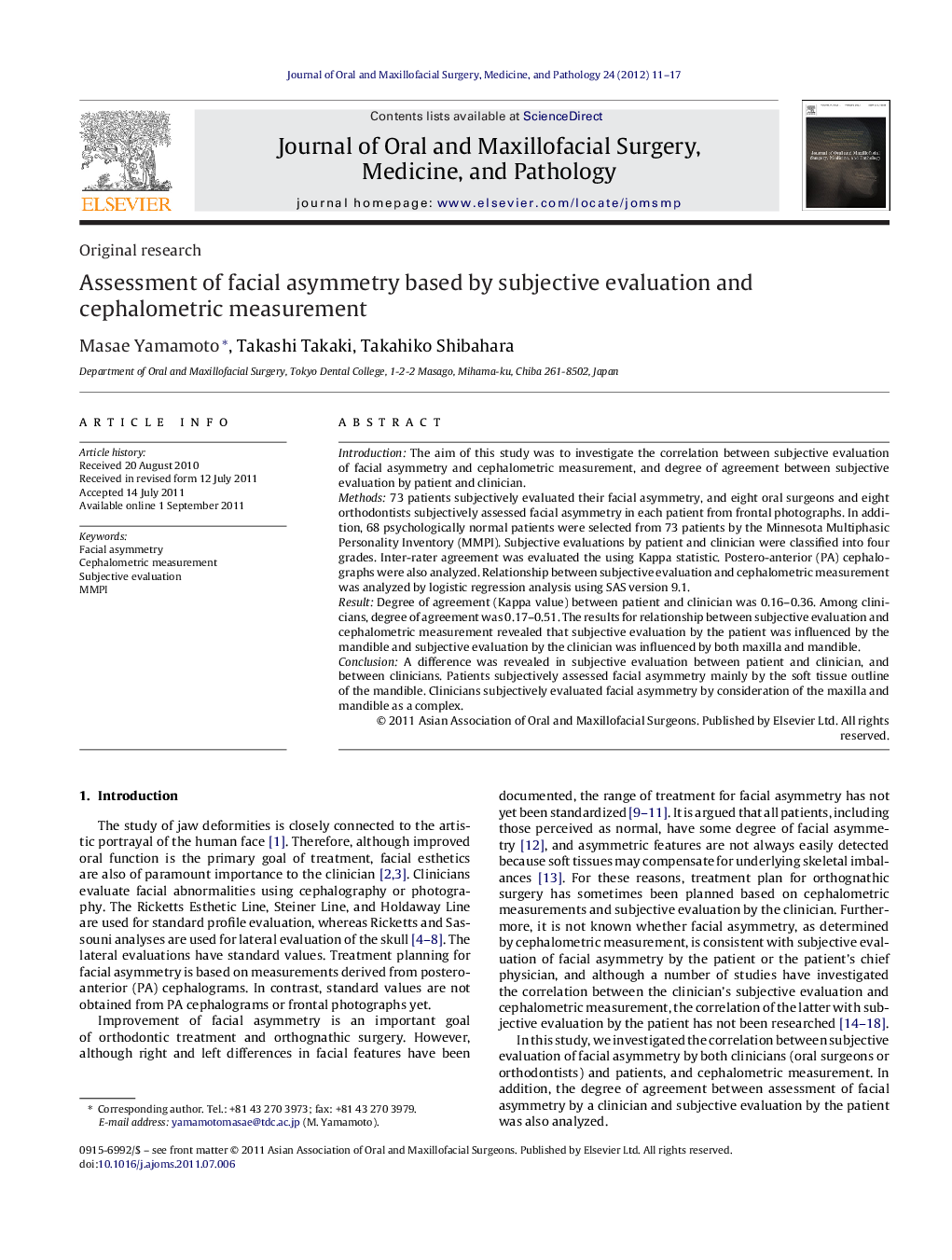| Article ID | Journal | Published Year | Pages | File Type |
|---|---|---|---|---|
| 3159980 | Journal of Oral and Maxillofacial Surgery, Medicine, and Pathology | 2012 | 7 Pages |
IntroductionThe aim of this study was to investigate the correlation between subjective evaluation of facial asymmetry and cephalometric measurement, and degree of agreement between subjective evaluation by patient and clinician.Methods73 patients subjectively evaluated their facial asymmetry, and eight oral surgeons and eight orthodontists subjectively assessed facial asymmetry in each patient from frontal photographs. In addition, 68 psychologically normal patients were selected from 73 patients by the Minnesota Multiphasic Personality Inventory (MMPI). Subjective evaluations by patient and clinician were classified into four grades. Inter-rater agreement was evaluated the using Kappa statistic. Postero-anterior (PA) cephalographs were also analyzed. Relationship between subjective evaluation and cephalometric measurement was analyzed by logistic regression analysis using SAS version 9.1.ResultDegree of agreement (Kappa value) between patient and clinician was 0.16–0.36. Among clinicians, degree of agreement was 0.17–0.51. The results for relationship between subjective evaluation and cephalometric measurement revealed that subjective evaluation by the patient was influenced by the mandible and subjective evaluation by the clinician was influenced by both maxilla and mandible.ConclusionA difference was revealed in subjective evaluation between patient and clinician, and between clinicians. Patients subjectively assessed facial asymmetry mainly by the soft tissue outline of the mandible. Clinicians subjectively evaluated facial asymmetry by consideration of the maxilla and mandible as a complex.
